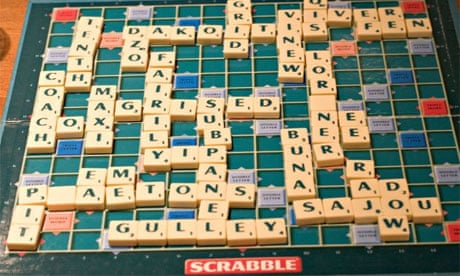1. TWISTER
This game is useful to practice colors and body parts, but you can customize it to practice other type of vocabulary, kids like this game because they can move and learn while they are having fun. What you will need are the carpet of twister and the board, but this only work with a small number of students, however you also can make it with your students by cutting color paper into circles with different colors and paste them in the floor, you can vary the number of circles according of the number of your students.
2. SCRABBLE
With this game we can practice with our students vocabulary and we can know how much our kids know and what are their difficulties in terms of vocabulary.
This game consist on a board were you can put the letters and it also gives you points according to the level of difficulty of the word if it is long or if the letter is difficult. Having the board game could be useful but we must have more than one, we should play it with a limited number of students or having our kids in teams. Another option is to create our own scrabble (we can use the help of the students) by cutting letters and assign them points, the board is not necessary and also we can play it in paper (by pairs) having an initial word and then students must write words with the letters of the written word.
3. GUESS WHO?
with this game you can practice physical appearance, the original game has two board with different persons to describe, but we can modify the game and the character according to wr needs, or according to the topic of the lesson, we can print charaters like animals, famous people, sports, tv programs, etc and play with them.
this game could work to practice numbers, kids like to play this game, they will have fun and learn. In a Bingo you will have some boards with different numbers and the word Bingo in the upper part of each one, also you will have a big board with all the numbers and it avoids repetion of numbers or confusion and finally you will found all the numbers cut, so the objective of the game is to cover all the numbers on the board of the players. As teacher you can change roles with your students and play with them. You can customize your bingo and create boards with images of clothes, animals, sports, etc.
5. LOTTERY
Here you will have some boards with images (this images could change according to your objective) and the images cut individualy, here you can practice any vocabulary topic, studets will have the boards and the teacher or another students will pick one out of all and tell to the other what it is, he/she can describe the picture or say the name. the students that have all the images corresponding to his/her board wins.
6. MORE GAMES
Here we would show you some pages with some free printable board games to play with your students according to the lesson.
- iSLCOLLECTIVE
- eslgamesworld





































